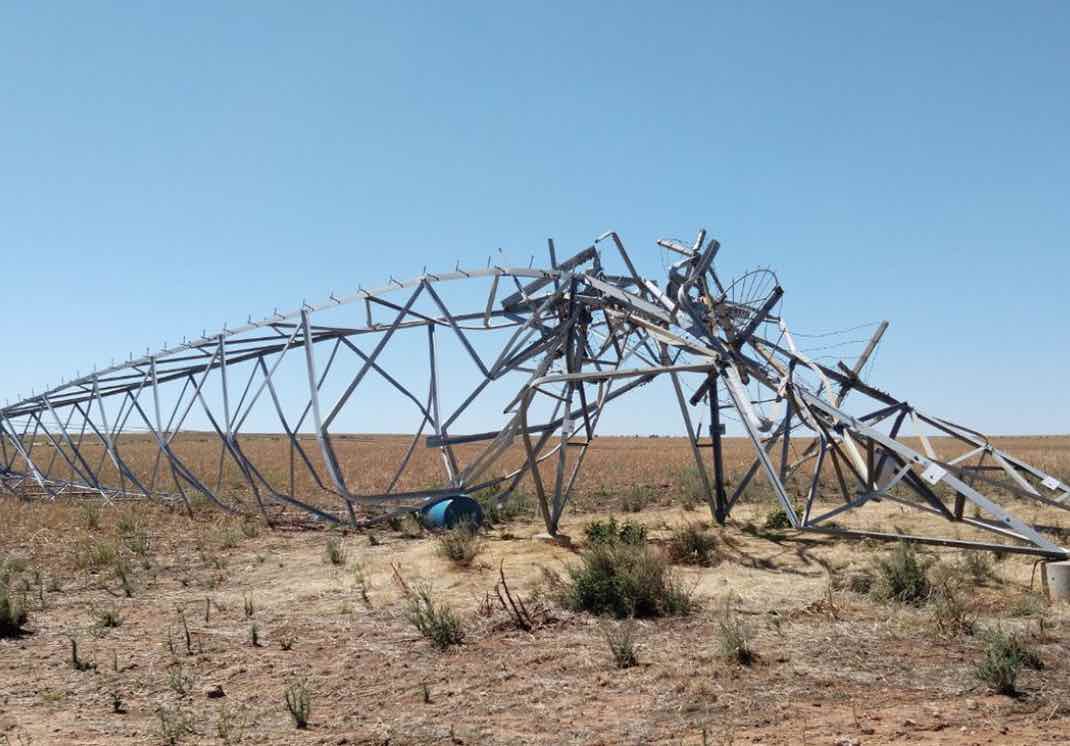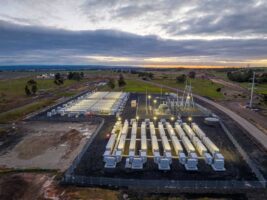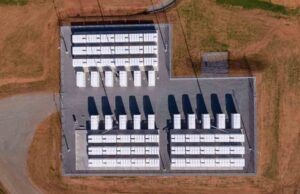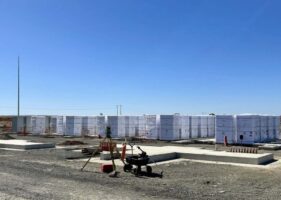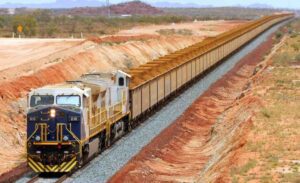The recent disastrous storms in Australia (in Queensland, NSW and Wester Australia) were all major threats to economic life, such was their impact. Such storms are largely unpredictable as they are caused by climate change and meteorologists don’t have their models calibrated to deal with this new data.
We can expect many more such events as runaway excessive heat in our atmosphere continues. So what can we do to prepare whilst going net zero?
The biggest impacts of the recent storms were on transmission lines, which are not able to cope with these new high intensity storms and which can take weeks to fix when they come down.

Transmission lines bring power from power plants in regional areas to centres of economic life. They are critical to the old fossil fuel grids and are seen by many as critical for bringing solar and wind farm power to towns, cities and especially heavy industries. But we need a more resilient system.
Two new studies from Lawrence Berkeley National Laboratory in California have shown there is an alternative: battery freight trains.
The research teams examined the economic feasibility of this new technology and then how they could be used to improve resilience in emergencies and as a means of replacing transmission lines as well as.
The studies by teams led by Popovich in 2021and Moraski in 2023 were published in Nature Energy and found that battery freight trains can tap into the new highly cost effective solar and wind power technologies (around half the price of diesel) and replace diesel locomotives with battery powered locomotives that enable regenerative braking.
The first paper concluded:
‘Our analysis provides initial evidence that—given near-future battery prices and access to wholesale electricity tariffs—retrofitting diesel-electric locomotives with battery-electric technology could save the US freight rail sector billions of dollars while yielding environmental, health and grid-resilience benefits’.
The second paper looked at how the battery freight trains could also be used to bring extra batteries in containers into emergency situations so that the train system played a vital role in resilience planning and in the grid integration to replace back up power and firming that is the basis for continued use of gas turbines.
That paper concluded:
‘The potential to use the US rail system as a nationwide backup transmission grid over which containerized batteries, or rail-based mobile energy storage (RMES), are shared among regions to meet demand peaks, relieve transmission congestion and increase resilience.
We find that RMES is a feasible reliability solution for low-frequency, high-impact events and quantify its cost effectiveness relative to reliability-driven investments in transmission infrastructure and stationary capacity.
Compared to new transmission lines and stationary battery capacity, deploying RMES for such events could save the power sector upwards of US$300 per kW-year and US$85 per kW-year, respectively.’
Thus, these RMES systems applied along a transmission corridor may replace the need for transmission lines altogether.
The concept is that trains can not only quickly provide large extra stored power in large quantities to any site on the rail network providing the resilience needed but they can also be the missing link in the transition period to a net zero economy.
If battery freight trains were fitted with a whole-train set of battery bogies that are filled with solar or wind power from DER or large solar/wind farms, they could be distributed along the line to all the necessary industries, towns, cities and ports that are necessarily requiring net zero power to make net zero products and services. Thus, they could eventually remove the need for transmission lines in the long term.
To best understand how this could work I believe we would need to assume a full distributed energy package is still used as much as possible in all local areas and local industries, but rather than rely on gas turbines as back-up the idea is that mobile renewable power, could be stored in batteries and then delivered wherever it was needed by trains as a utility service. They can become the missing link in our net zero economies.
How can this happen? Its best understood by applying it to a local situation.
Application to Australia
The freight train network in Australia carries minerals, agricultural products and increasingly processed materials such as the new critical minerals so necessary for the decarbonization of the world.
The addition of a mobile battery storage system that can become rapidly applied to disaster relief as well as being part of the net zero production system, can be demonstrated in Western Australia where battery freight trains are already being purchased along with electric mining machinery as part of the net zero mining industry.
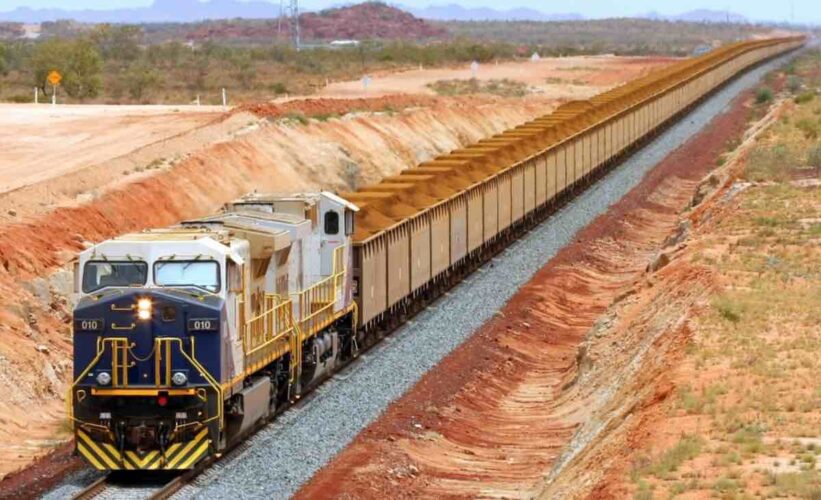
There are two parts of WA that would immediately benefit by this new model: the South West Integrated Sytem (SWIS) where a recent massive, unpredicted storm destroyed the transmission system going out to Kalgoorlie, and the North West Integrated System (NWIS) being built to join up multiple mining systems in the cyclone-sensitive mining area of the Pilbara.
South West Integrated System
The SWIS is a highly spread-out grid and two processes are causing a rapid decarbonisation of the grid: Stand-alone Power Systems in rural weak parts of the grid; and a huge growth in rooftop solar in Perth and regional cities.
These provide the baseline power during the day with increasing use of wind in some areas, and increasing battery storage options in community scale and industrial scale. There is an increasing need for batteries to provide daily firming that replace gas turbines and these batteries will be needed for industries as well as towns across the whole region.
Battery freight trains can eventually replace all diesel freight trains and play a role in providing extra batteries into the system wherever needed.
They will need recharging and swapping of batteries at major sites in the system and thus a large number of batteries can be provided as back up in any regional and urban locations. Many country town stations have space for these mobile storage systems.
These stores of batteries can then be available for immediate relief in areas where power is down. Back-up power is already part of the SWIS grid system but the gas turbines in Kalgoorlie, which are not used for years as they are paid to come on only in emergencies, could not be used as the transmission lines were down.
A battery-freight train storage system can be developed along each transmission line in the SWIS working with the needs of local industries and towns, and helping each place and processing centre to create a net zero economy.
The regional ports of Geraldton, Bunbury, Albany and Esperance are all moving towards net zero and are obvious places for greater processing of mineral and agricultural products to achieve premium prices for net zero exports.
The inland port of Kalgoorlie has a large rail network linking it to mineral and agricultural areas with many nearby solar and wind farms. This place could be a major centre for battery freight train systems to be focussed and would have prevented the disastrous impact from the recent storm.
The new port of Fremantle (Westport in Kwinana) is being created as a net zero port and has close links to the Kwinana Industry Complex which is also going net zero. The large rail network feeding into this could be the first place to be a service centre battery-freight train storage, recharge and maintenance area.
The whole system could then show how DER works. The local distribution system with its local solar would have lots of battery back-up so it’s the baseload service, along with smart firming of the system from batteries.
Solar farms and wind farms in the regions can then be stored in batteries and then be brought into cities and towns by train across the grid when needed.
The idea is similar to what has happened with the South West water system where wind power-based desalination has replaced rain-fed dams and groundwater for much of the region.
But the original transmission pipelines to Kalgoorlie and the South West are still used after pumping the coastal desal water up the scarp to the original transmission dam built over 120 years ago.
The train lines followed over the next hundred years and opened up the regions for agriculture and rural communities. Now the train lines could begin to service the net zero economy.
North West Integrated System
The NWIS has been planned for many years but mining companies have only recently taken steps to be joined into a regional power service. This will enable the whole system to rapidly become renewable as the Pilbara has the highest solar energy levels in the world.
The rail systems are highly developed for the mining industry and could easily carry more battery storage to enable each place to work without large transmission systems that are no longer needed when the mine closes. The rail system can carry extra batteries to areas damaged by cyclonic storms.
The regional ports of the Pilbara are likely to be developed for battery electric trains in storage, recharge and maintenance. These are also likely to become places for processing net zero products.
Already there is a project to underground local distribution power lines and if transmission lines can be replaced by battery electric trains then the whole area becomes far more resilient as well as net zero.
The Pilbara can be a model for many parts of the Middle East and Africa where solar and wind are being developed for their future but expensive and inefficient transmission lines are a big challenge to going net zero.
Conclusion
There is much happening with solar and batteries in homes and stand-alone power systems and now starting in urban precincts as part of net zero strategies.
But the issue remains about grid integration which can help not just in enabling the removal of the last gas turbines, but also how to respond to the growing need for emergency provision of power to areas that need immediate power assistance.
Battery-electric freight trains clearly have a role to play in replacing diesel-electric trains, but perhaps regional rail transport systems that already service industries in regions, could be used in emergencies to bring emergency batteries into areas that need them due to climate change-induced destruction of transmission lines.
These growing supplies of EV trains and batteries could then be stored along the rail lines to create a business model that replaces the need for transmission lines altogether over a longer term.
Peter Newman, AO, is professor of Sustainability at Curtin University

